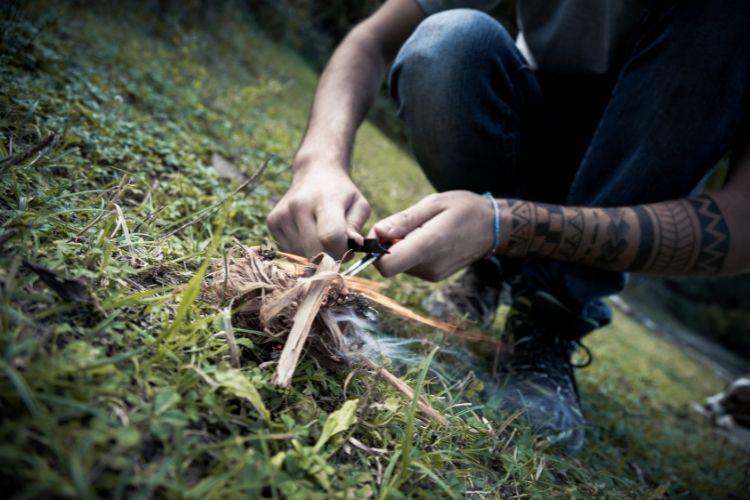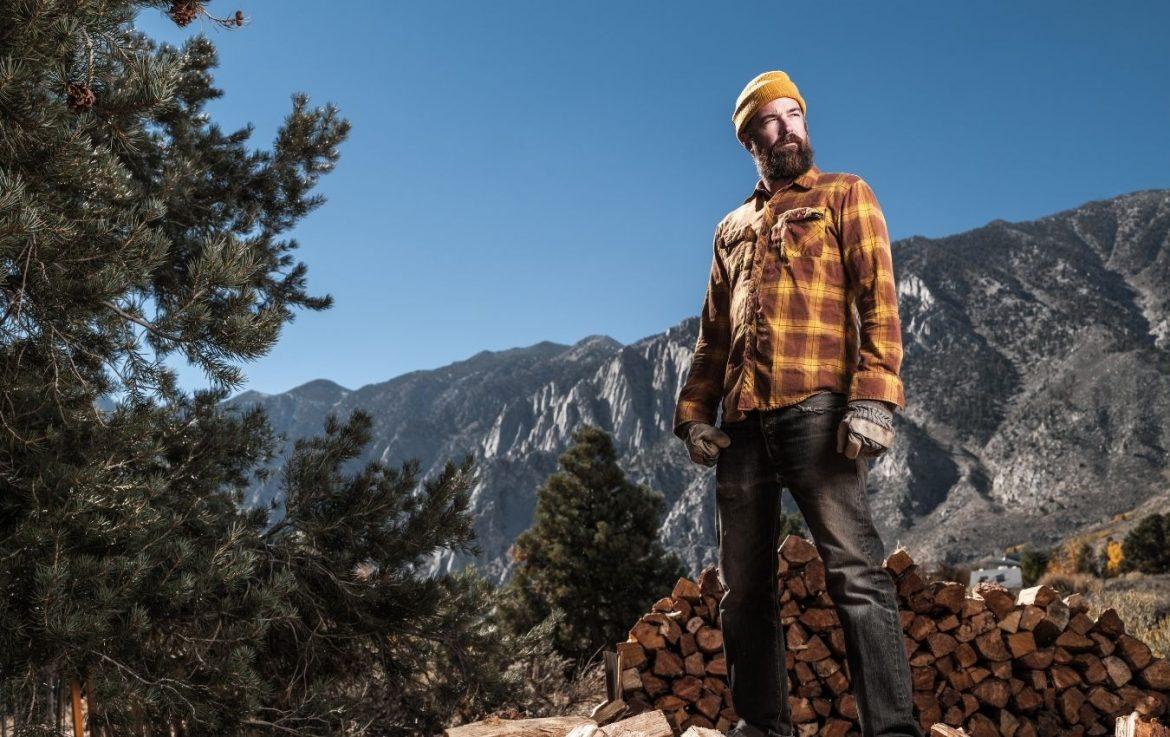Table of Contents
Mountains are unforgiving. They generate their own weather, create their own ecosystems… and punish those who aren’t prepared. Luckily, we got Chad Weatherford, two-time Field & Stream Total Outdoorsman Challenge Champion, to share some secrets.
So even if you live in a Brooklyn apartment rather than an Appalachian cabin, you can sound like you’d survive in the mountains. (And for more knowledge, check out Tom Oar and the rest of HISTORY’s Mountain Men, which kicks off its second season Sunday, June 9th, at 9/8c.)
Start A Fire

We’ve all seen the friction method of starting a fire in movies like Cast Away, but Weatherford says the technique is easier said than done. The trick is to have plenty of dry pine needles, small pieces of bark and leaves close by to get things going.
Now cut a V-shaped groove in a dry, flat board (the fire box), find a strong, dry stick (the spindle) and start rubbing the spindle vigorously in the groove (hehe). If you do get an ember, push it quickly into the tinder. Blow gently to get the fire going—and don’t let it go out.
Tie a Basic Knot
Unless you’re a former Boy Scout, tying complex knots can be a headache. But Weatherford says many knots are simple to tie and highly effective. To tie a timber hitch (pictured), you just wrap rope around a tree trunk, loop the rope around itself three times and pull it tight.
This is great for making a shelter. A sheet bend is the perfect knot for joining two ropes together. Just make a loop in the end of one rope and pass the other rope through this loop, around the loop and then back under itself before pulling it tight.
Catch and Eat a Fish

If you can find a stick, a shoelace and a piece of wire, you can fashion your own fishing pole. If you’re near a small stream, another option is to fill it in on the sides to create a “pinch point” to channel the fish through. Then, spear one with a sharpened stick (although perhaps not as dramatically as in the photo). As far as cleaning it goes, grab a sharp knife and:
1) Cut off the head.
2) Hold it by the tail and cut along the backbone toward where the head used to be. Repeat on both sides.
3) Insert your knife between the flesh and the outer skin of the fish and carefully cut away the skin and scales. Now cook and eat that bad boy.
Use a Compass
You don’t have to be an expert mountaineer to understand that the red arrow on your compass is always pointing north.
So as long as you can keep your wits about you, have a map and have even a vague idea of where you might be on that map, you can use a compass to find north and then use that “north” bearing to walk in the proper direction toward a trail, campsite or another recognizable landmark.
Build a Shelter
If you can’t find a natural shelter (caves, large leaning trees, etc.), Weatherford says to look for a high, dry and flat area to build your own.
For a “lean-to” type shelter, you just need three long branches to lean against one another and lash together with flexible bark or vines.
Use two branches the same length for the opening and a longer branch to create the “upper spine” of the shelter.
Then add smaller branches to act as ribs between that spine and the ground. Now cover the whole thing with branches that are thick with leaves for a roof.
Prevent Bear Attacks

Your best chance of beating a bear is not in a straight fight, but by playing your cards right, says Weatherford.
“First off, if the bear hasn’t seen you, be quiet and wait to see if it will pass by,” he says. “If it does see you, don’t run away. Rather, try to stay still. If the bear sees you and starts to approach, you should stand your ground and wave your hands up high while yelling loudly. If you are attacked, your best chance for survival is to cover your head and play dead.”
Treat a Wound
Even without a first aid kit, Weatherford says you can still buy yourself some time after an injury with the right approach.
For a bad cut, rinse it out with water and apply direct pressure to the wound with a towel or a torn-off strip of T-shirt. “If you have a broken bone, use two sticks with the bandage to create a splint.” A Sam Splint
Stop Falling
Tumbling down a mountainside is not the most peaceful moment in any man’s existence, but if you’re going to survive, Weatherford says you have to keep calm. “Try to get onto your back with your feet in front of you,” he says.
“This will help protect your vital areas and also allow a better view of where you’re going. Put your arms out away from your sides to help slow yourself down and to allow you to grab onto things to stop yourself.”
Purify Water
If you don’t have a filter or purification drops and tablets, then boiling the water for 10 minutes is your best bet before drinking it.
Another trick is to dig a hole in the ground, put a container at the bottom, and put plastic over the hole. Put a rock in the center of the plastic over the container to create a slope. Water in the ground will condense and drip into the container.
Final Words
Learning these skills is only part of the battle – you need to practice them as well.
“Spending time in the mountains is the best way to become proficient at mountaineering,” says Weatherford. “You can take lessons and read books, but there is no substitute for time in the field.”

